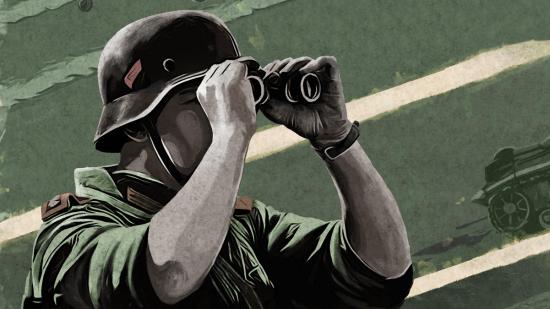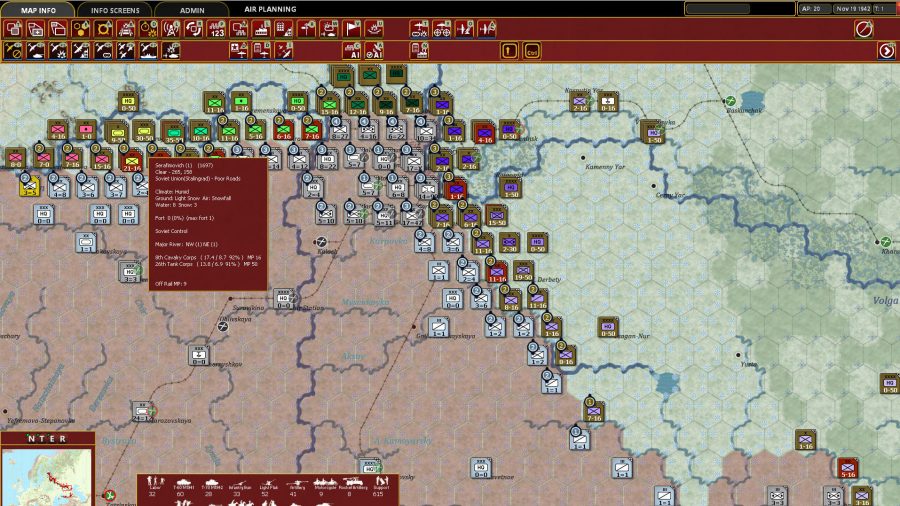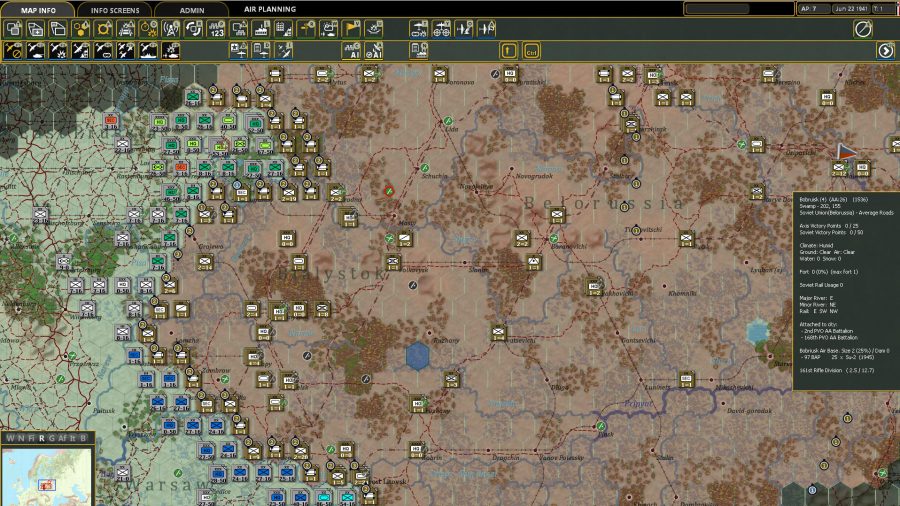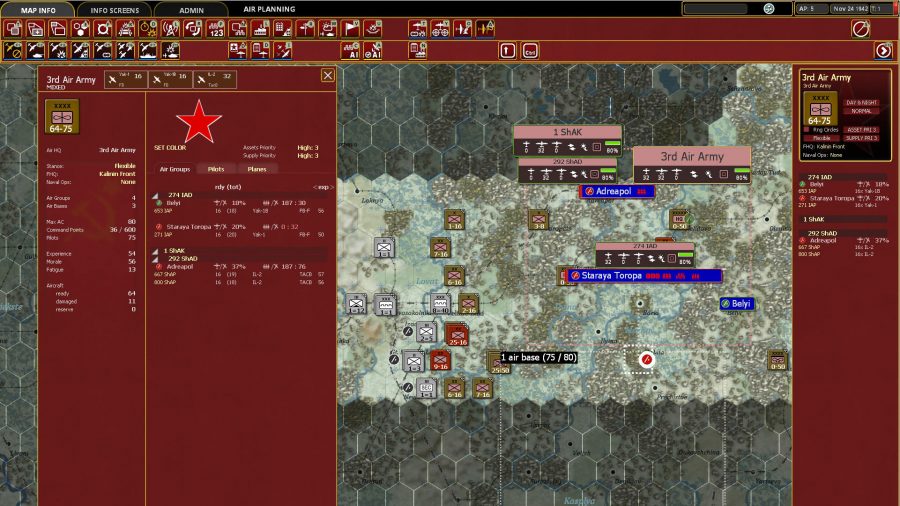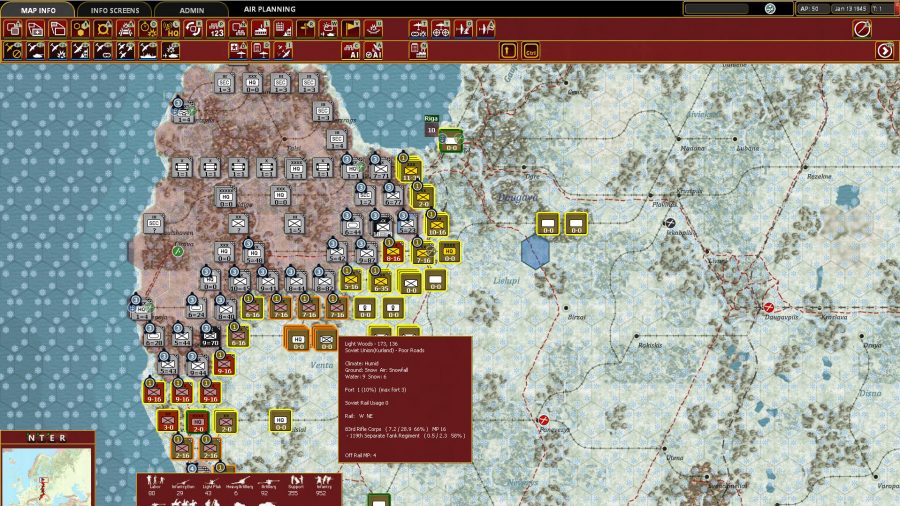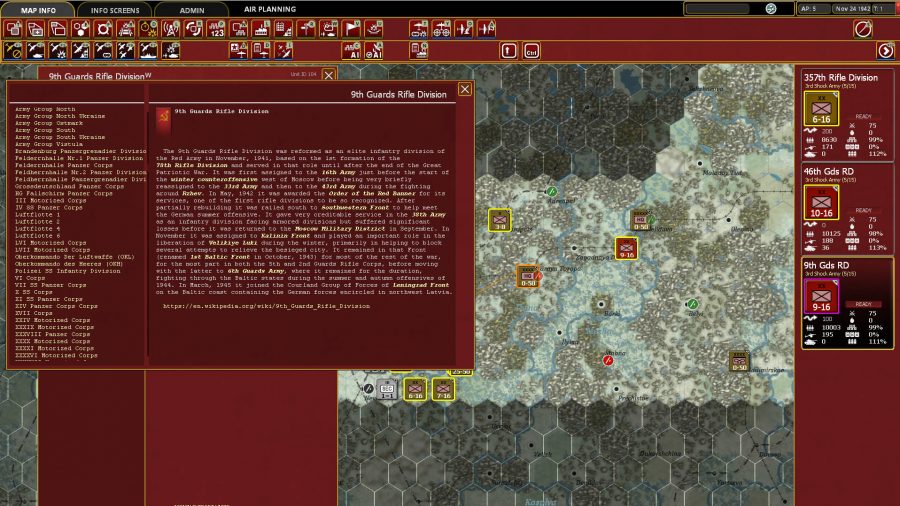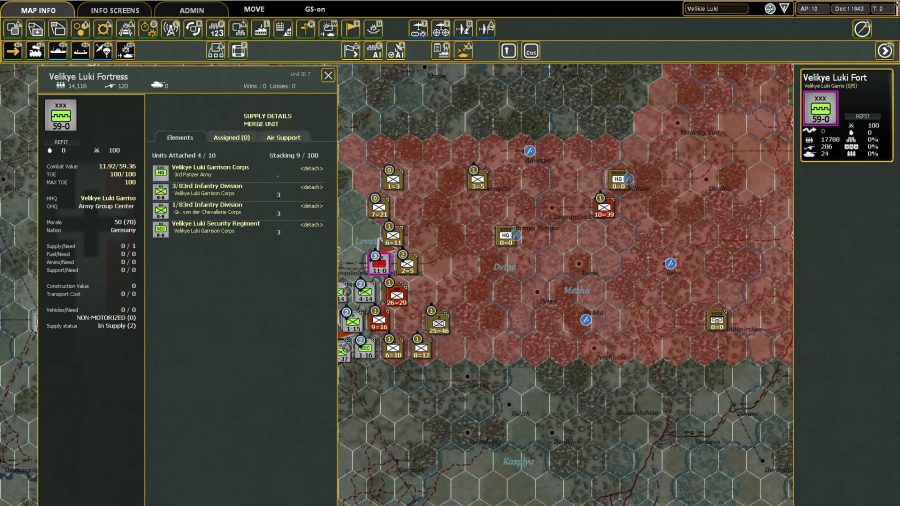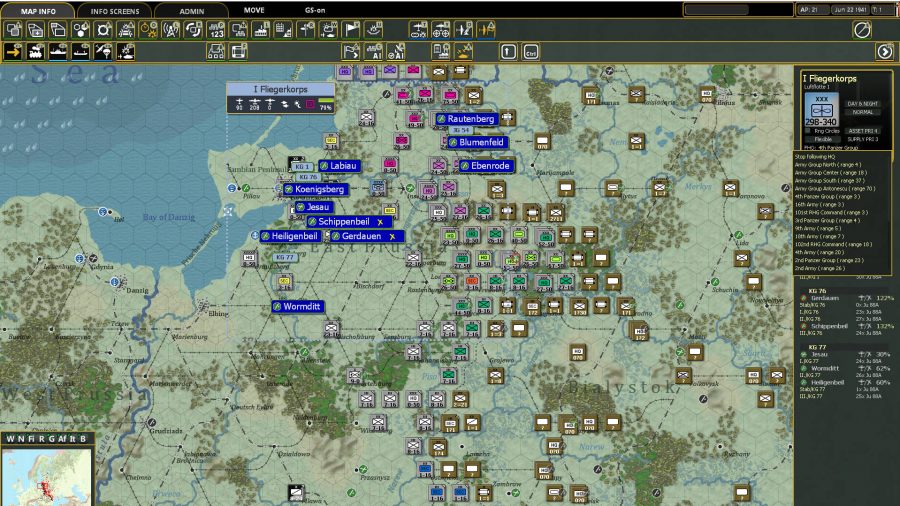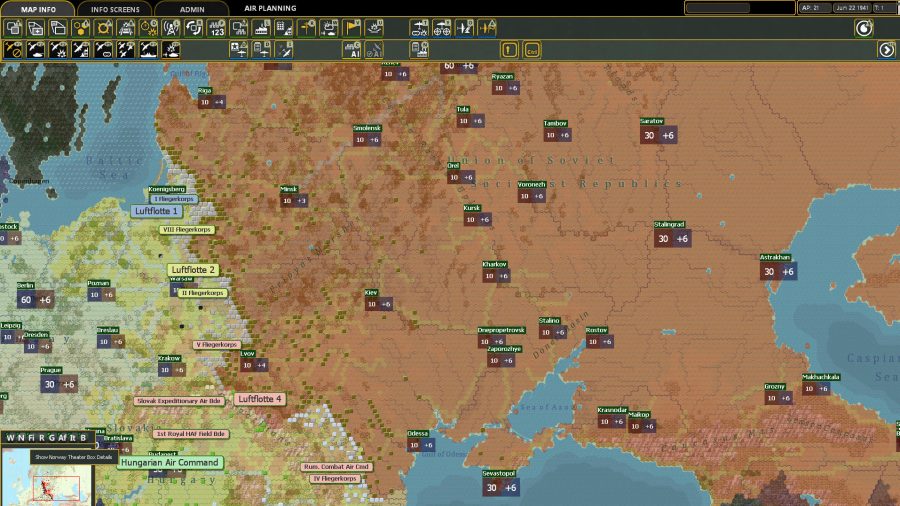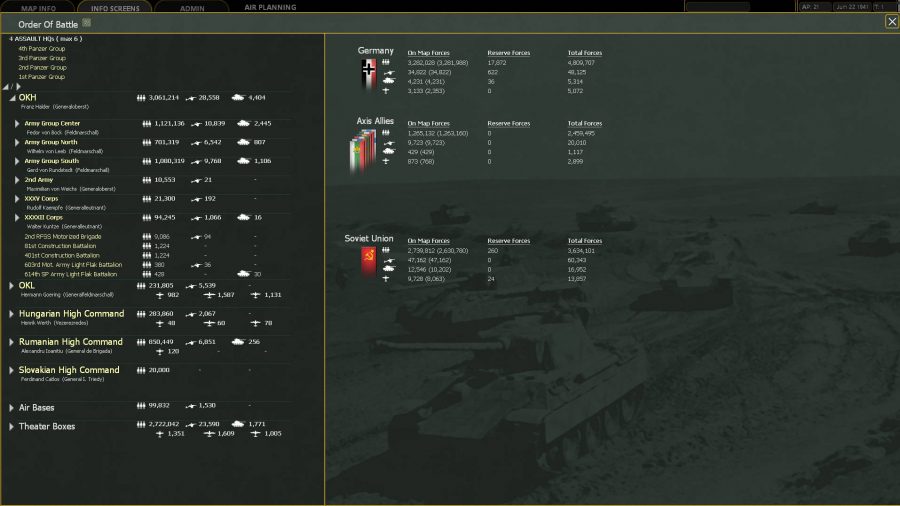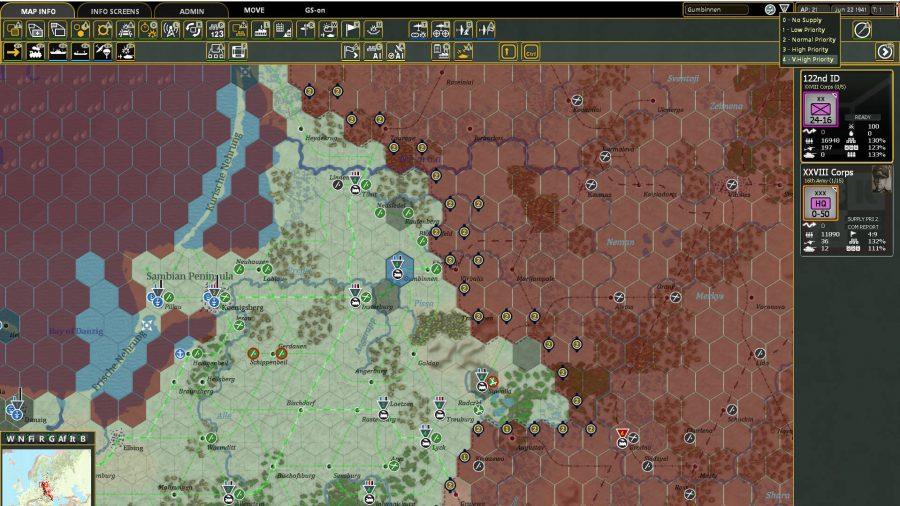If you had to point to a single contemporary digital wargame as an example of the genre’s potential complexity and mechanical intricacy, you couldn’t do much better than singling out Gary Grigsby’s War in the East. The digitised hex-and-counter wargame has taken on something akin to notoriety in the hobby’s space, for its massive scope, operational depth, and stern commitment to realistically simulating the Eastern Front of World War 2. Few other games can match the capacity of its player systems, or parallel the detail of its military operations.
And its upcoming sequel, Gary Grigsby’s War in the East 2, looks to be no different. As Erik Rutins, executive producer, and Joel Billings, co-founder of developer 2by3 Games and producer on War in the East 2, tell Wargamer, the next instalment will expand the game’s systems outward: a more dynamic map, deeper logistics system, rewritten combat, deeper air wars, extended off-map theatres, realistic weather system, and more. All of this, of course, to better its historically-grounded gameplay.
Throw in a 520-page rulebook, and you’ve got a true monster – a game that sounds equal parts deep and overwhelming to the casual wargamer. With complexity comes the cost of accessibility, as the entanglement of increasingly esoteric mechanics expands the scope of gameplay and obscures its roots, leaving new players lost among possibilities.
This is not lost on War in the East 2’s developers.
“Whenever you’re adding complexity to a game, you always have to think: how are we going to put this into the game so that it not only adds realism, which is an important goal in and of itself for historical games like this, but improves the experience for the player,” says Rutins. “It was a two-part process for us”.
On a basic level, War in the East 2’s additional mechanics and heightened complexity have been developed to complement players’ interests. While its primitive, sprawling interface might give the impression of a game of ceaseless scope upheld by abstruse operations, Rutins says War in the East 2 tries to hand the player as much complexity as they can take. Learn the rules of its systems to tweak and explore them, or leave them on the sidelines, and bumble along in willful ignorance of the game’s deeper mechanics, yet to tap into their potential.
At its most basic level, War in the East 2 can amount to little more than your average numbers-driven strategy fare. “You can be a starting wargamer who comes in and says, ‘Okay, I see, a unit, and it’s got this number on his counter,” says Rutins. “And here’s another unit that’s got a number. My unit’s roughly twice as strong, so I’ll try to attack that. I’ll just move over there, right-click on it, and we’ll see what happens.’”
The idea is a familiar one, and has been implemented with great success in the more mainstream wargames from Paradox Interactive. You can quickly pick up and implement basic play, but larger, deeper, and more interesting concepts can be gradually explored as you feel more confident in your operational abilities. The extent, and pace, to which you peek behind the curtain is up to you.
But however far you dive in, Rutins says the higher-level features have been implemented to not simply heap more decisions onto you, but offer greater scope for strategic nuance.
Europe divided: Read our guide to the best WW2 games
“A lot of the game will, in effect, run itself if you want it to,” he says. “So if what you really want to do is, and this is something we’ve taken as a bit of a philosophy with our more complex games, is control the land war, and take those counters and push them around, and have the clash of armies happen and learn by experimentation, you can do that.”
Billings offers examples the new logistics and air war systems as examples. They can be meticulously controlled, or left to the automata of the game should you feel overwhelmed. As in the series’ 2014 spin-off War in the West, an AI assist function lets you accord broad commands to your troops and manage some of the surface level operations, while portioning the gritty, backline, and generally less-glamorous details, to the computer.
“The new air system allows you to give orders to your Luftflottes or your Fliegerkorps, and say, ‘follow these armies,’ and that’s all you need to do,” Billings says. “It will totally take care of the Air Force at that point, and make the air directives fly the missions, do everything based on that. So you can make it very simple for yourself. And the same with the logistics system in terms of the AI depot management.”
Again, it feeds into this concept of player choice. You can take on as much work as you want, safe in the knowledge that any mechanics you find overly-complex, tedious, or perhaps outside of your current grasp, won’t be left as ailing obstacles to your progress. Perhaps in contradiction to the image of the shrewd, highly-cognate wargamer that the hobby often paints of itself, War in the East 2 recognises that most players won’t immediately be able to spin multiple plates.
Unburdened complexity
Other additions have been implemented, not as optional extras to embrace or outsource to the AI, but to advance the game’s realistic simulation of the Eastern Front, without burdening the player with greater entanglement. The idea is to implement a slew of mechanics for the player to react against, directing their play without layering on yet more supplementary considerations.
“If you look at something like the weather system, it’s absolutely more complex,” Billings says. “You have real weather fronts moving across the map, creating rain or snow at different places – as opposed to War in the East, where we had three big weather zones blocked out.
Not hot: These are the best Cold War games
“You can have a weather front come through, and it has an effect on one area that’s different from another. Instead of having summer be 100% dry, or everything’s mud, and then everything’s snow, like a board game would, suddenly you have the chance of having summer rainstorms that bring light mud that have an impact on the game. You can have a late mud season, or an early thaw.
“Now you have a whole other layer of, yes, complexity, but it gives the player a chance to react, and for us to adjust his plans based on what’s happening. It makes each playthrough more interesting.”
Rutins adds: “If you’re playing in that, you don’t really get an additional burden, so much as you just feel more immersed. You feel like this is the Eastern Front in World War Two, and nothing is spoiling that suspension of disbelief.”
But even with these steps taken in game design to improve accessibility, there’s no escaping the major issue that many players will have with the game, and the one that will often colour their perception of it from the off – its visuals. With a flat, 2D hex map, populated with informational counters rather than sleek unit models, War in the East 2 is not a grand aesthetic departure from the first game, and will never be anyone’s idea of aesthetically enthralling. But its utilitarian graphics have been spruced up in other areas.
“The old War in the East map was effectively a series of single images pasted together,” says Rutins. “[War in the East 2’s map] is dynamically generated from a lot of different hexes, and in order to do that, we had to generate a lot of very specific hex art. Some of it can be reused, but you still want the map to look like the real location. So there are a lot of custom hex sizes and custom terrain pieces to get all those interesting coastlines, and peninsulas, and historical lakes.”
“Switching to the tile base map was huge for us from a design point of view,” agrees Billings, “because it made it possible to fix the map and change the map as we went along. We were constantly making changes so the map is more authentic. And as we found more information about these – where the rails were, where the roads were, where the terrain was – we were able to adjust that on the fly.
“So we were making changes for five years now, on the map.”
Squad tactics: Check out our Combat Mission guide
Alongside the graphical overhauls come the less sexy but perhaps more important, interface alterations. While not undergoing a redesign, exactly, the interface retains its blocky, slightly dated sheen, but has seen a refocus, with more thought given to visually representing the dense mechanics that new players might overlook or ignore. Chains of command, for example, are now shown directly on the main map screen, with weak links and overloaded points stark visualised without having to trudge through reams of information panels.
“We specifically looked at what are the players who are really advanced at this game – the one’s kicking butt and taking names – what are they doing that the beginning players aren’t? And how can we bring that to the surface so they have much easier access to the tools that the advanced players have figured out how to use?” says Rutins.
“There’s a lot more of that, both in the map overlays and some of the more information-dense screens, that try to bring those things out. All the way down to where it’s guiding a new player to realise, ‘Okay, you’re going gain some fatigue by doing this’, or ‘You’re gonna lose some of your combat preparation by doing this.’
“The fundamental principle was: let’s organise things in a way that makes more sense. And let’s try to add things in that make things more transparent for all players of all skill and experience levels,” he adds.
Historical simulation
Despite these efforts to extend War in the East 2 to more casual wargamers, don’t expect any dumbing down of the series’ stern commitment to historical realism. War in the East 2 is first and foremost a historical simulation game, tailored for maximum fidelity.
Even so, Rutins and Billings hope its historical realism will appeal beyond the hardened grognards that frequent War in the East and other hex-and-counter wargames of its ilk. They say that even those not infatuated with 20th Century military strategems or the events of the Eastern Front might find some shared thread of appeal between the game and other, broader tabletop wargames.
Mental mettle: These are the best strategy board games
“If you play 40k, some of the huge planetary battles where they have Imperial Guard and the Space Marines going up against all kinds of aliens, a lot of the same principles that go into the stories that they write about in those settings come out of historical settings, like World War Two,” says Rutins.
“So the Eastern Front in World War Two is the real-life version of the battle of Armageddon, or something like that. And the principles that you learn by playing through a hardcore historical game apply to all kinds of strategy games, they don’t just stay here.”
Above all else, War in the East 2 has retained its predecessor’s commitment to historical accuracy. Not interested in emulating the mainstream success of alternate-history sandbox wargames, such as Hearts of Iron 4, which have expanded their playerbases through whacky, off-the-rail simulations, War in the East 2 is wed to history. While you can shuffle around units and divisions, the theatres of war represented in-game have been designed as true-to-life as the developers could get.
“This is very focused on giving you a realistic Eastern Front,” says Rutins. “Anything that you could have historically done, or any choice in the Eastern Front and World War 2, you can do. But you’re not going to be going to Kamchatka. You’re not going to be starting back in 1936 and choosing a completely different year to invade Russia, or anything like that. That’s out of the scope.”
In-game events replicate the shifting political and military fortunes of the German and Soviet forces, reams of background information about the hundreds of units playable in-game is included, and a competitive overlay system allows you to check the capture dates of cities across the War, letting you assess whether your war efforts are keeping up with history, or whether you’re lagging behind your real-world military counterparts.
But even with this overarching strive for fidelity comes a self-confessed absurdity.
“You also need a certain amount of insanity and passion to work on hardcore wargames,” says Rutins. “You need to abandon, to a degree, the normal limitations of scope that you might impose on yourself for a more realistic game project.”
